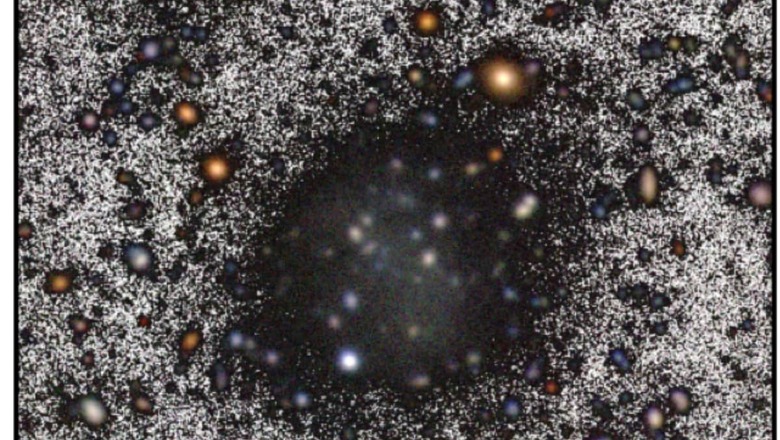
views
Scientists have made a perplexing discovery in the vast expanse of the universe. They have come across a dwarf galaxy called Nube, which is almost invisible and doesn’t conform to the usual understanding of such celestial objects. This galactic entity has left researchers puzzled due to its unique characteristics, which don’t fit into the existing cosmological models.
Discovered by an international research team comprising scientists from the Instituto de Astrofísica de Canarias (IAC), the University of La Laguna (ULL) and other institutions, the findings were published in the journal Astronomy & Astrophysics. The ethereal appearance of Nube, which translates to Cloud in Spanish, has captivated many due to its unique features. Interestingly, the name Nube was given by one of the researchers’ five-year-old daughters.
Nube’s dim presence had eluded detection in previous sky surveys due to its extraordinarily faint surface brightness, resembling a ghostly apparition in the vast expanse of space. Its stars are dispersed across such a vast volume that traditional observation methods failed to capture its existence until now.
This newly unveiled galaxy challenges the norms of galactic classification, with researchers estimating Nube to be ten times fainter yet ten times more extended than other dwarf galaxies of its type. In comparison to the Milky Way, Nube occupies only a third of its size but boasts a mass akin to the Small Magellanic Cloud.
Mireia Montes, the lead author of the study and a researcher at IAC and ULL, expressed bewilderment at Nube’s existence, stating, “With our present knowledge, we do not understand how a galaxy with such extreme characteristics can exist.”
Ignacio Trujillo, the co-author of the study, revealed that the discovery emerged from meticulous analysis of sky images obtained through projects like Legado del IAC Stripe 82 and was further confirmed using ultra-deep multicolour images from the Gran Telescopio Canarias (GTC). Despite these efforts, pinning down Nube’s exact distance remains elusive, with estimates placing it at approximately 300 million light-years away.
Further observations using advanced telescopes such as the Very Large Array (VLA) and the William Herschel Telescope (WHT) are underway to unravel the mysteries surrounding Nube. Trujillo emphasised, “If the galaxy turns out to be nearer, it will still be a very strange object and offer major challenges to astrophysics.”
The anomalous nature of the Nube extends beyond its faint luminosity. Contrary to the typical distribution of stars within galaxies, Nube exhibits a uniform density throughout its structure, challenging prevailing theories rooted in the cold dark matter model.
Montes pointed out, “The density of stars varies very little throughout the object, which is why it is so faint, and we have not been able to observe it well until we had the ultra-deep images from the GTC.”
The perplexing characteristics of Nube present a significant conundrum for cosmologists, as existing theoretical models struggle to account for its existence. Montes suggested that Nube’s peculiarities may signal a departure from conventional understandings of dark matter, hinting at the possibility of particles with exceedingly small masses.
Trujillo speculated, “If this hypothesis is confirmed, it would be one of the most beautiful demonstrations of nature, unifying the world of the smallest with that of the largest.”



















Comments
0 comment